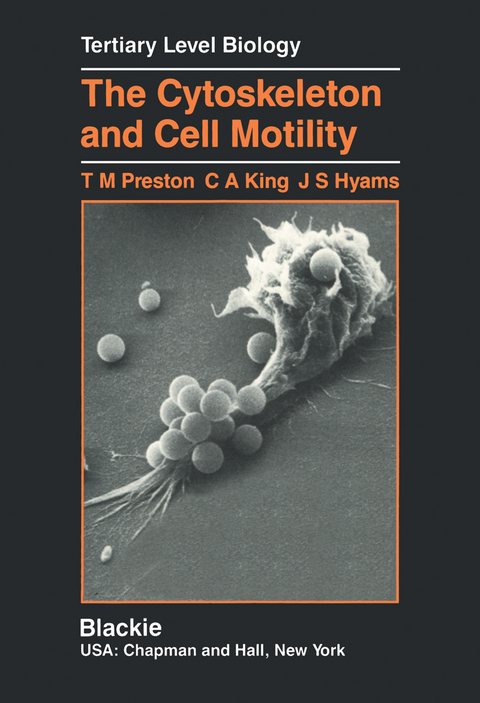
The Cytoskeleton and Cell Motility
Kluwer Academic Publishers (Verlag)
978-0-216-92674-5 (ISBN)
1 Introduction.- 2 The Molecular Components of the Cytoskeleton.- 2.1 Actin and actin-associated proteins.- 2.2 Microtubules and microtubule-associated proteins.- 2.3 Intermediate filaments.- 2.4 Summary.- 3 Movement within Cells.- 3.1 Axonal transport.- 3.2 Intracellular motility in the Protozoa.- 3.3 Cytoplasmic transport in the ovaries of hemipteran insects.- 3.4 Movement of pigment granules in chromatophores.- 3.5 Cytoplasmic streaming in plant cells.- 3.6 Summary.- 4 Mitosis.- 4.1 Basic steps of mitosis.- 4.2 The mitotic spindle: general properties and design principles.- 4.3 Organisation of spindle microtubules.- 4.4 Mechanisms of anaphase chromosome movement.- 4.5 Summary and conclusions.- 5 Cilia and Flagella.- 5.1 Distribution and waveforms.- 5.2 Basal bodies and rootlets.- 5.3 Structure of the axoneme.- 5.4 Extra-axonemal components.- 5.5 Membrane specialisations.- 5.6 Biochemical complexity of the axoneme.- 5.7 The sliding microtubule model.- 5.8 Behavioural responses of microorganisms and the control of ciliary and flagellar beating.- 6 Crawling Movements.- 6.1 Common features of crawling locomotion.- 6.2 Amoeboid movement.- 6.3 Chemotaxis.- 6.4 Tissue cell locomotion.- 6.5 Myosin and crawling locomotion.- 7 Cell Surface Motility.- 7.1 General account.- 7.2 Gliding.- 7.3 Summary.- 8 Other Mechanisms for Producing Force and Movements.- 8.1 Contractile phenomena.- 8.2 Crawling in nematode sperm.- Further Reading.
| Erscheint lt. Verlag | 1.4.1990 |
|---|---|
| Reihe/Serie | Tertiary Level Biology |
| Zusatzinfo | 69 Illustrations, black and white; IX, 202 p. 69 illus. |
| Verlagsort | Dordrecht |
| Sprache | englisch |
| Maße | 148 x 210 mm |
| Themenwelt | Geisteswissenschaften |
| Studium ► 1. Studienabschnitt (Vorklinik) ► Anatomie / Neuroanatomie | |
| Naturwissenschaften ► Biologie ► Zellbiologie | |
| Sozialwissenschaften | |
| ISBN-10 | 0-216-92674-2 / 0216926742 |
| ISBN-13 | 978-0-216-92674-5 / 9780216926745 |
| Zustand | Neuware |
| Informationen gemäß Produktsicherheitsverordnung (GPSR) | |
| Haben Sie eine Frage zum Produkt? |
aus dem Bereich


